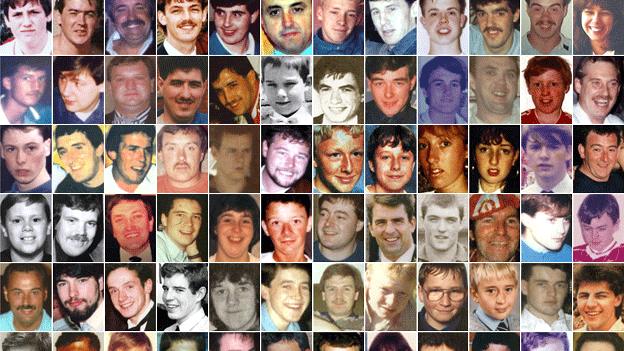Hillsborough: The six men facing charges over the disaster
- Published
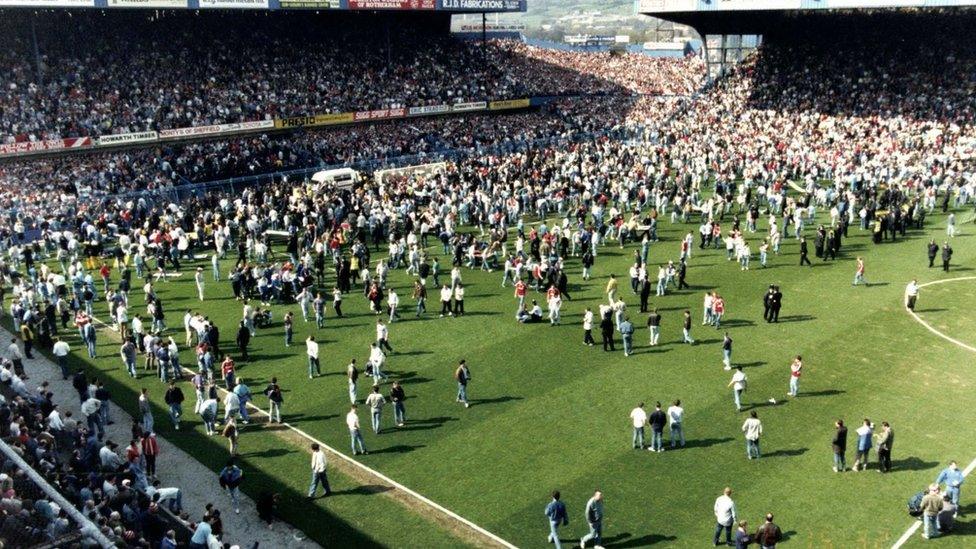
Ninety-six people were fatally injured in a crush at the match in 1989
Six men, including four former senior police officers, face charges over the Hillsborough disaster and its aftermath.
Ninety-six Liverpool fans were fatally injured in a crush during an FA Cup semi-final at Sheffield Wednesday's stadium on 15 April 1989.

David Duckenfield
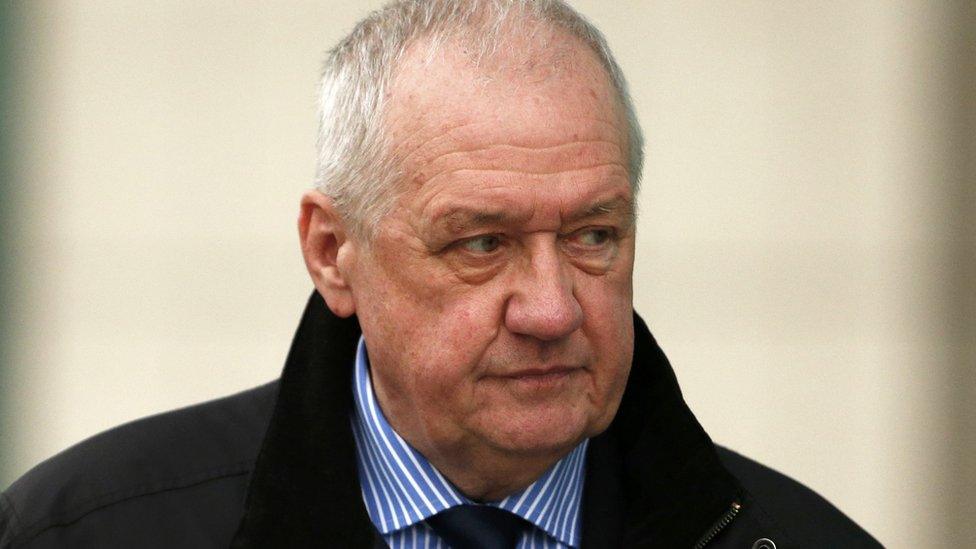
Former Ch Supt David Duckenfield was South Yorkshire Police's match commander at Hillsborough and will face charges of the manslaughter by gross negligence of 95 of the victims.
He gave the order to open exit gate C following a build-up of Liverpool fans trying to enter the ground outside the Leppings Lane turnstiles.
It is alleged the opening of the gate led directly to the fatal crush in the central pens of the terraces behind the goal.
The FA Cup semi-final was the first football match the newly-promoted Mr Duckenfield had taken control of.
The Crown Prosecution Service (CPS) has said it will allege Mr Duckenfield's "failures to discharge his personal responsibility were extraordinarily bad and contributed substantially to the deaths".
The CPS added that in order to charge Mr Duckenfield, they would need to apply to the High Court to remove the stay of prosecution imposed at the end of a 1999 private prosecution.
Also, because the law at the time of the disaster has to be applied in charging decisions, he cannot be charged over the death of the 96th victim, Anthony Bland.
Mr Bland died almost four years after he was injured in the crush and a charge would have required his death to have occurred within one year and one day of him receiving those original injuries.

Graham Mackrell
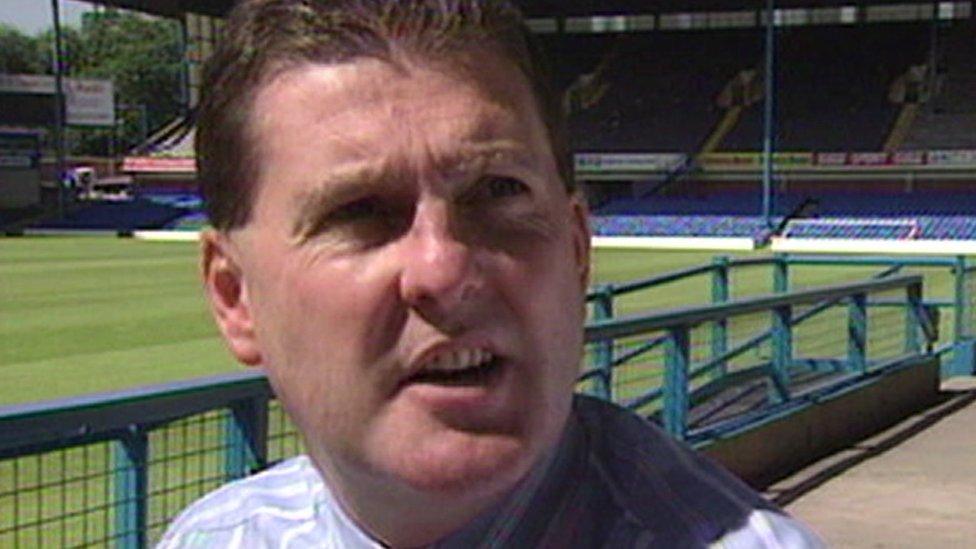
Graham Mackrell was the company secretary at Sheffield Wednesday at the time of the disaster.
His role gave him responsibility for the overall control of safety at the club's stadium, Hillsborough.
Defects at the ground, including calculations over crowd capacity, allegedly contributed to the disaster.
He has been charged with two offences of contravening a term of condition of a safety certificate contrary to the Safety of Sports Grounds Act 1975 and one offence of failing to take reasonable care for the health and safety of other persons who may have been affected by his acts or omissions at work under the Health and Safety at Work etc. Act 1974.

Peter Metcalf
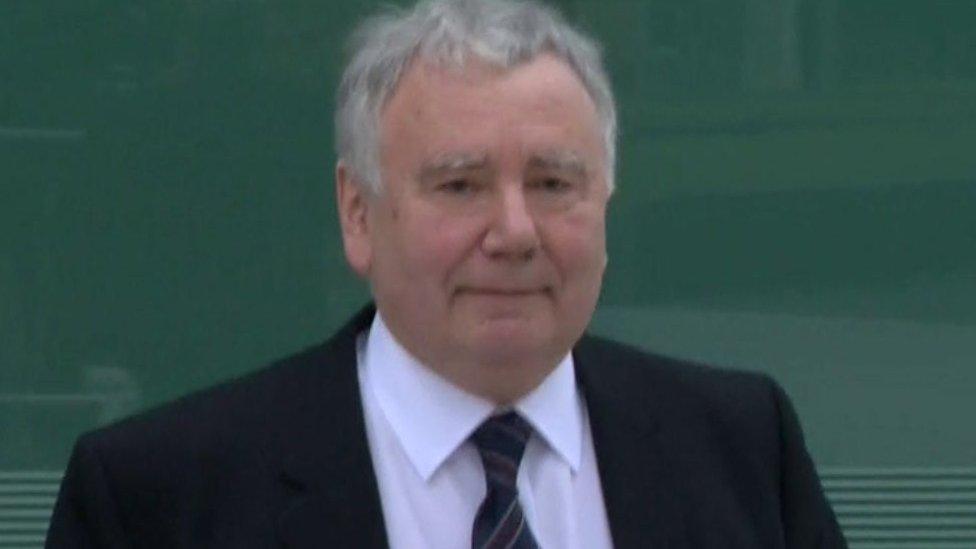
Peter Metcalf was the solicitor for South Yorkshire Police during 1989's Taylor Inquiry, which looked at what had happened at Hillsborough, and during the first inquest into the fans' deaths, the verdict of which was quashed in 2012.
An experienced solicitor, he was instructed by Municipal Mutual Insurance to represent the interests of the force at the inquiry and in any civil litigation that might result from the disaster.
He has been charged with perverting the course of justice.
The CPS said the charge relates to material changes made to witness statements.
It is alleged he reviewed accounts provided by the officers and made suggestions for alterations, deletions and amendments.
Mr Metcalf has declined to comment on the accusations.

Donald Denton
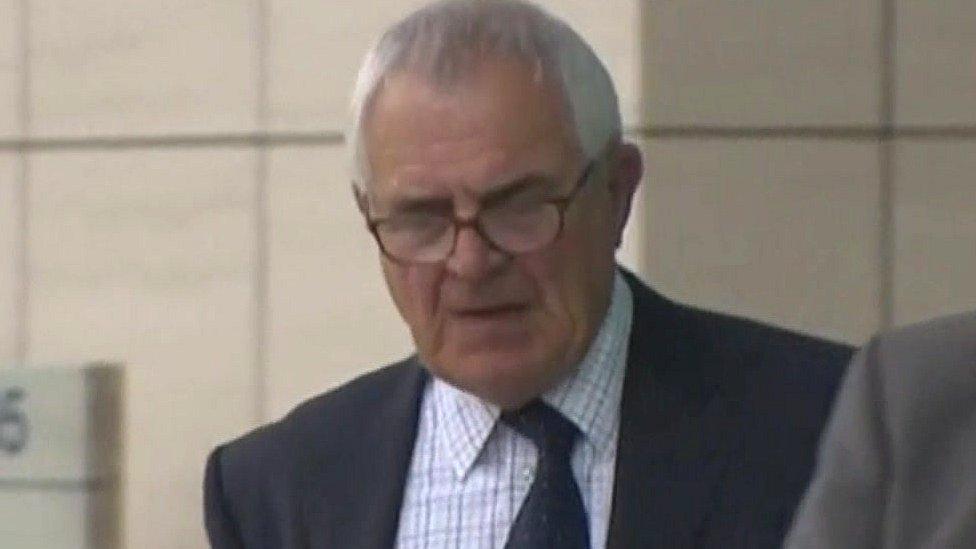
Former Ch Supt Donald Denton was a senior South Yorkshire Police officer who, it is alleged, oversaw the process of amending officers' statements following the disaster.
He has been charged with perverting the course of justice.

Alan Foster

Alan Foster was a detective chief inspector with South Yorkshire Police at the time of the Hillsborough disaster.
The CPS claimed he was "central to the process of changing the statements and took action to do so".
He has been charged with perverting the course of justice.

Sir Norman Bettison
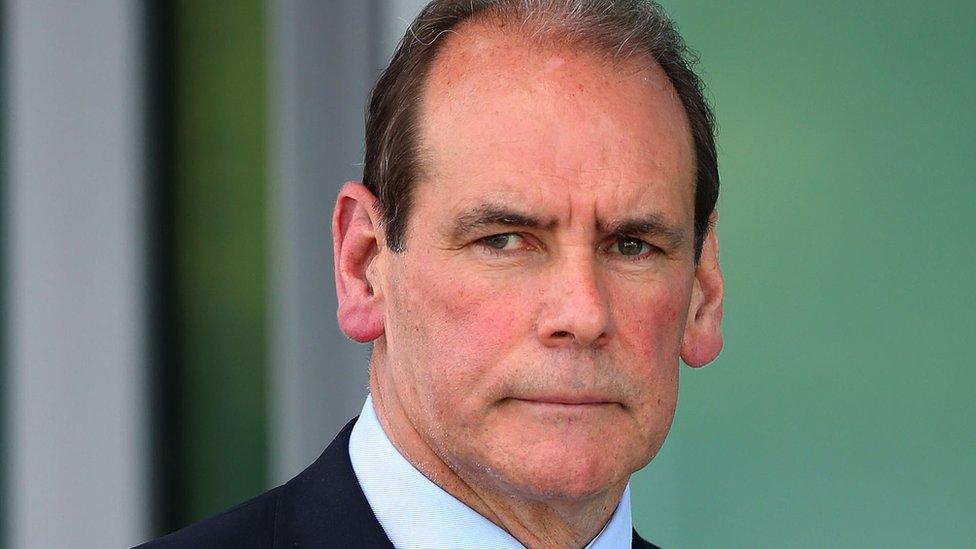
Sir Norman Bettison was a chief inspector with South Yorkshire Police at the time of the Hillsborough disaster, which he witnessed as a spectator in the ground.
In the aftermath, he was part of a police team that gathered evidence about what had happened for use at the Taylor Inquiry.
He went on to become chief constable of Merseyside Police and West Yorkshire Police.
He has been charged with four offences of misconduct in public office.
The CPS said the charges relate to alleged lies about his involvement in the aftermath of Hillsborough and the culpability of fans.
In a statement, Sir Norman said he was "disappointed to be charged".
"The charge is not in relation to my actions around the time of the disaster but in relation to comments I made years afterwards," he added.
"I will vigorously defend my innocence as I have been doing for nearly five years."

Which individuals and organisations were not charged?
Sheffield Wednesday Football Club: The CPS said the club as it exists today is a different company to the one at the time of the disaster, when it was Sheffield Wednesday PLC. As it is not a successor organisation it was not criminally liable for any offences that might have been committed
South Yorkshire Police officers: Six other officers of various ranks were investigated and the CPS concluded there were no acts or omissions capable of amounting to gross negligence manslaughter or an abuse of the public's trust to the required criminal standard for an offence of misconduct in public office.
South Yorkshire Metropolitan Ambulance Service (SYMAS): The CPS said SYMAS was a service supplied by Trent Regional Health Authority (TRHA) rather than a legal entity in itself and TRHA ceased to exist when its responsibilities were transferred. As criminal liability was not transferred to the successor organisations, there is no body - corporate or incorporate - which could now be prosecuted, even if liability could be proven.
SYMAS employees: The actions of three SYMAS employees were considered by the CPS. It found there was insufficient evidence to charge the two more senior officers with an offence under the Health and Safety at Work Act 1974. There was sufficient evidence of a health and safety breach against one junior ambulance employee but it concluded it was not in the public interest to prosecute this worker.
The Football Association (FA): Files were handed to the CPS on the FA and one of its officers in relation to the Safety of Sports Grounds Act and the Health and Safety at Work Act. It found there was insufficient evidence to establish that any breach of the safety certificate could be placed within the responsibility of the organisation or any FA employee, and nor did the FA contribute to a material risk to safety.
- Published28 June 2017
- Published28 June 2017
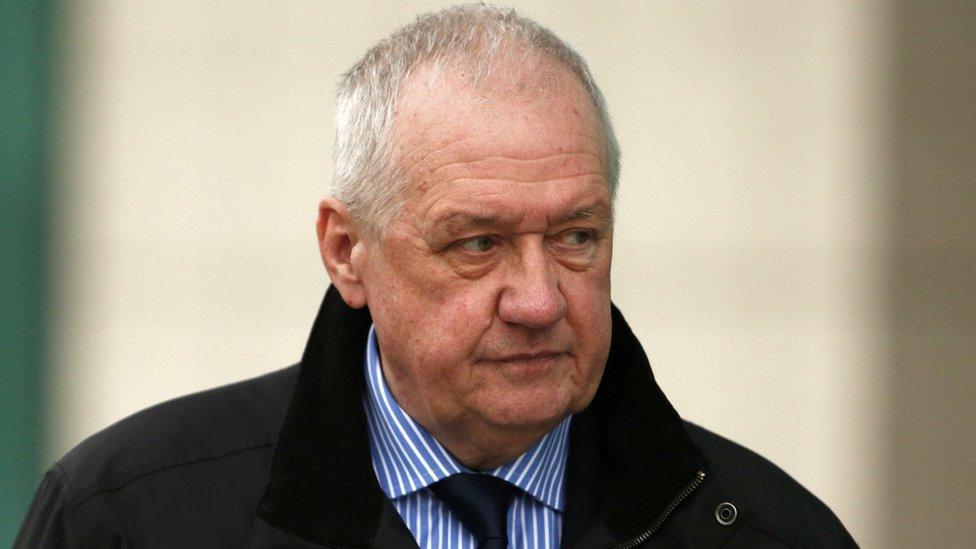
- Published26 April 2016
